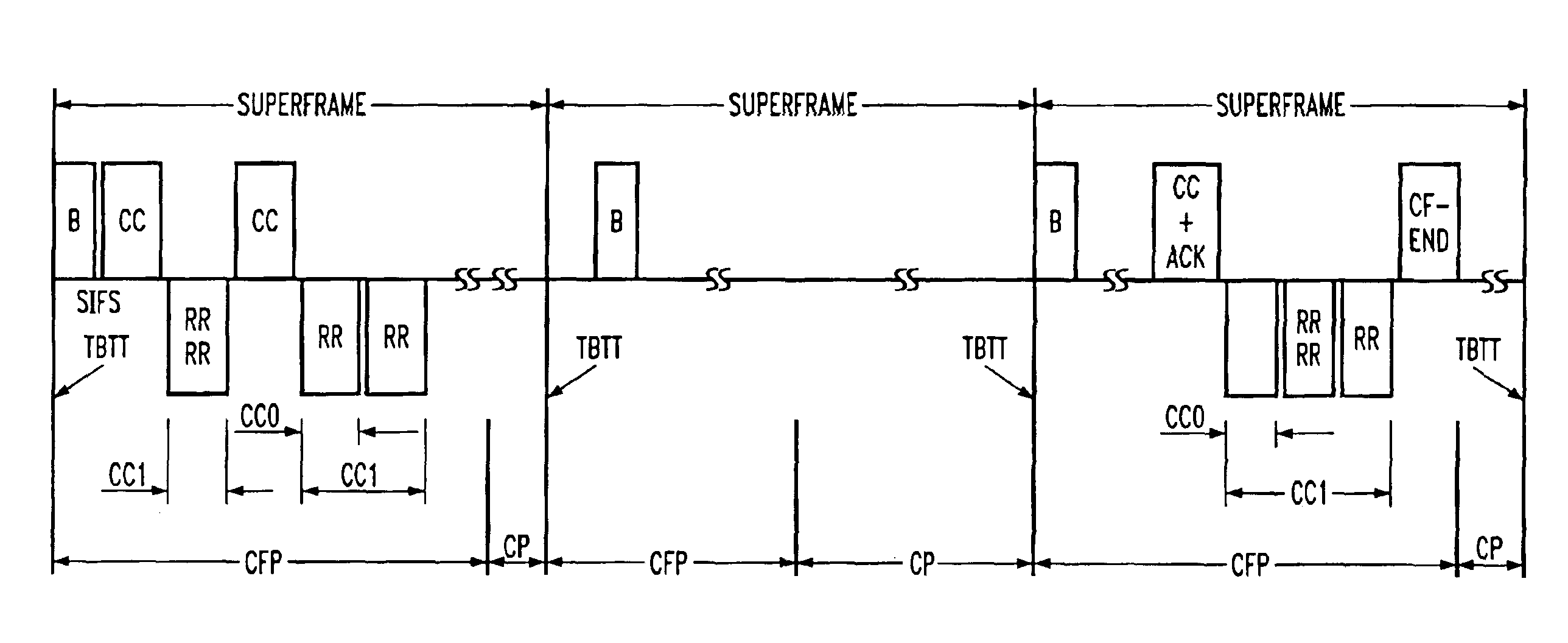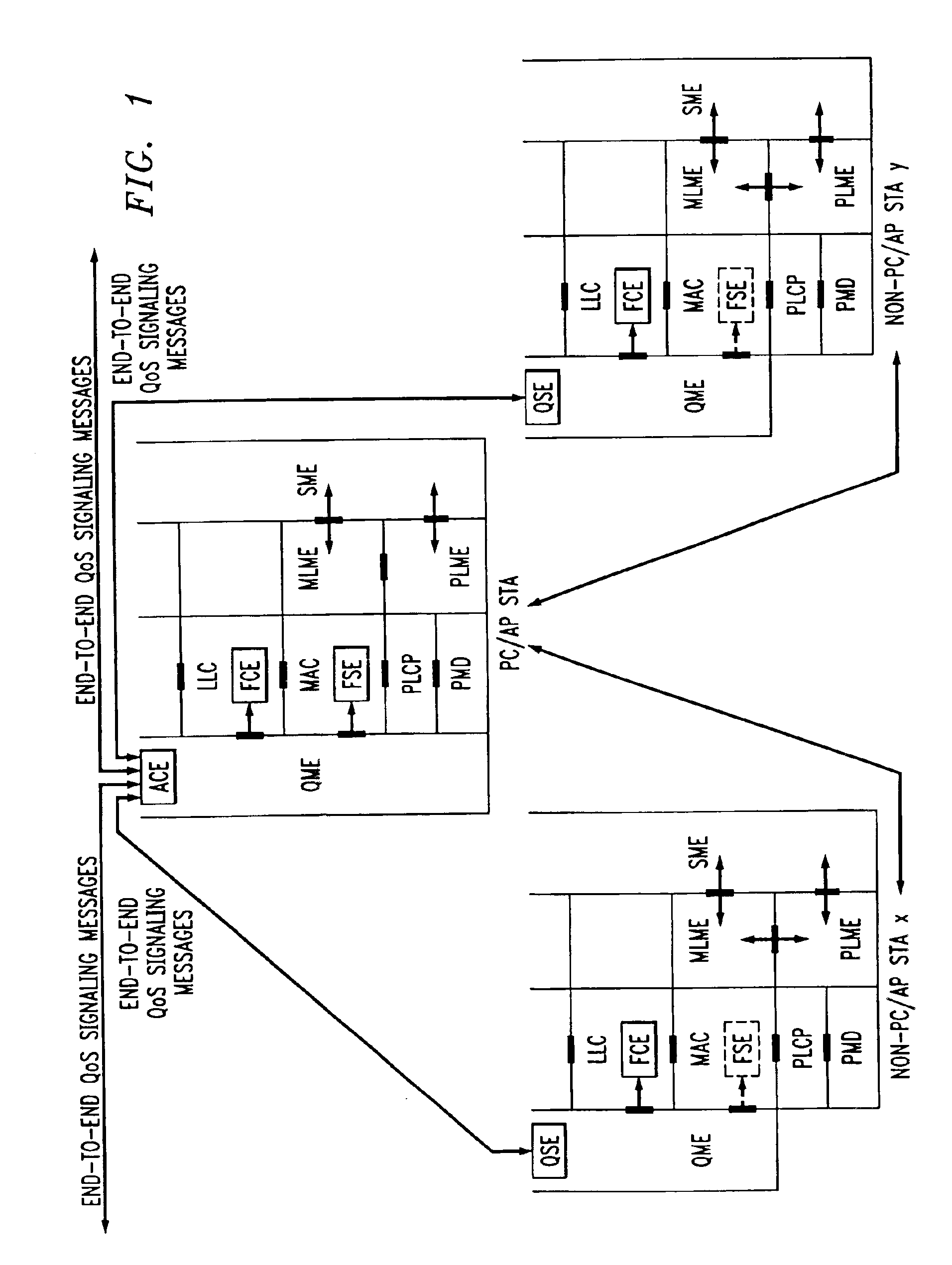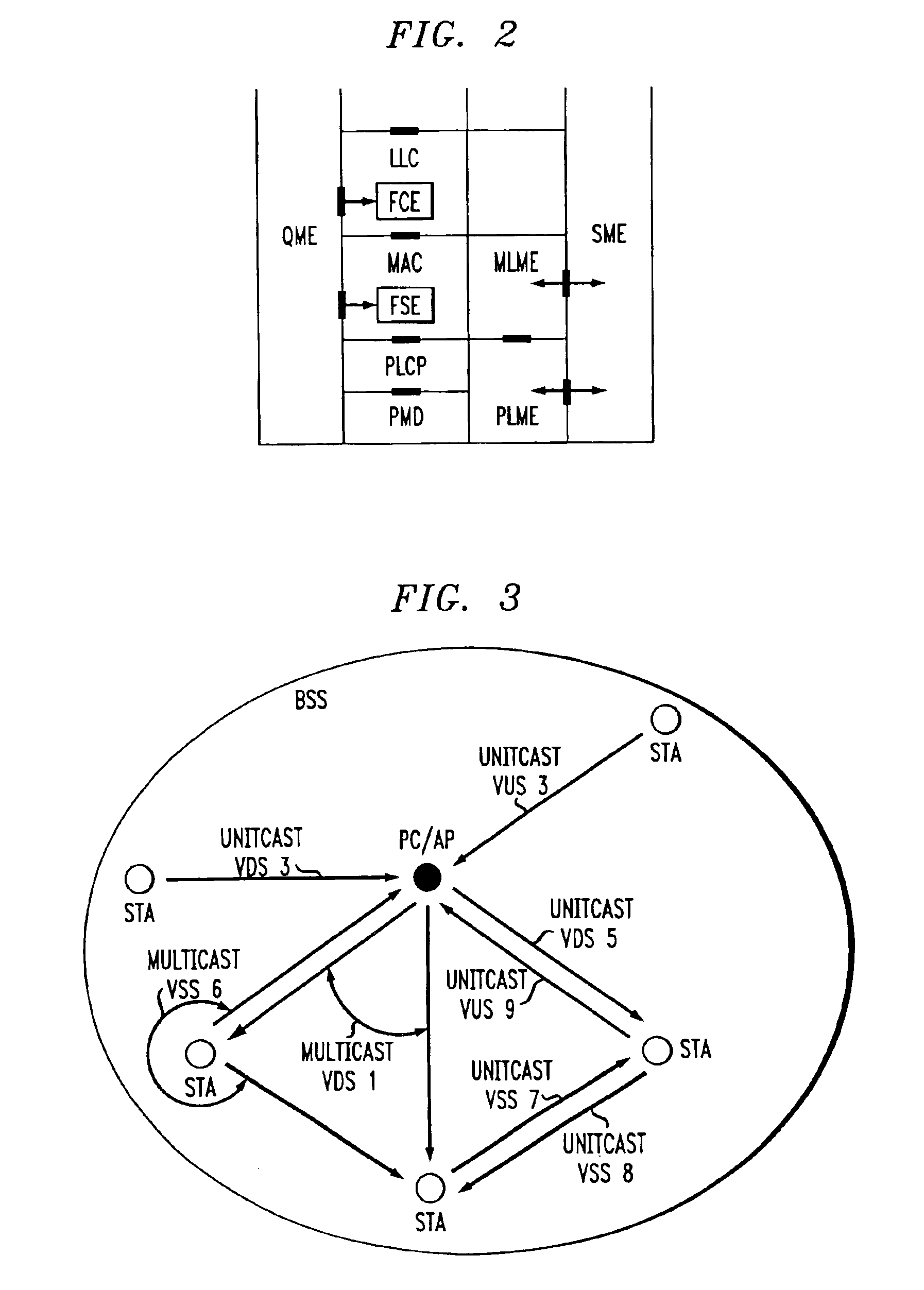Centralized contention and reservation request for QoS-driven wireless LANs
a wireless network and reservation request technology, applied in the field of communication and networking, can solve the problems of low-throughput best-effort data services, asynchronous and low-throughput data services, and the inability to support qos transport in wireless local networks (wlans), and achieve the effect of maximizing channel throughpu
- Summary
- Abstract
- Description
- Claims
- Application Information
AI Technical Summary
Benefits of technology
Problems solved by technology
Method used
Image
Examples
Embodiment Construction
[0027]The present invention provides an architectural reference model that integrates the lower layers (link and PHY layers) of a WLAN, as currently specified by IEEE P802.11 / 1999, with the higher layers (network and higher layers) that appear in the ISO / IEC basic reference model of Open Systems Interconnection (OSI) (ISO / IEC 7498-1), but not in IEEE P802.1111999. Both the IEEE P802.11 / 1999 and the ISO / TEC 7498-1 standards are incorporated by reference herein. Additionally, the present invention provides end-to-end QoS mechanisms. Such integration instills the QoS parameter values from the higher layers into the lower layers, and enables the lower layers to provide QoS traffic transport and improved channel throughput.
[0028]Compared to the existing reference model, as specified in IEEE P802.11 / 1999, the present invention introduces an admission control entity (ACE), a QoS management entity (QME), a frame classification entity (FCE), and a frame scheduling entity (FSE) for a point co...
PUM
 Login to View More
Login to View More Abstract
Description
Claims
Application Information
 Login to View More
Login to View More - R&D
- Intellectual Property
- Life Sciences
- Materials
- Tech Scout
- Unparalleled Data Quality
- Higher Quality Content
- 60% Fewer Hallucinations
Browse by: Latest US Patents, China's latest patents, Technical Efficacy Thesaurus, Application Domain, Technology Topic, Popular Technical Reports.
© 2025 PatSnap. All rights reserved.Legal|Privacy policy|Modern Slavery Act Transparency Statement|Sitemap|About US| Contact US: help@patsnap.com



